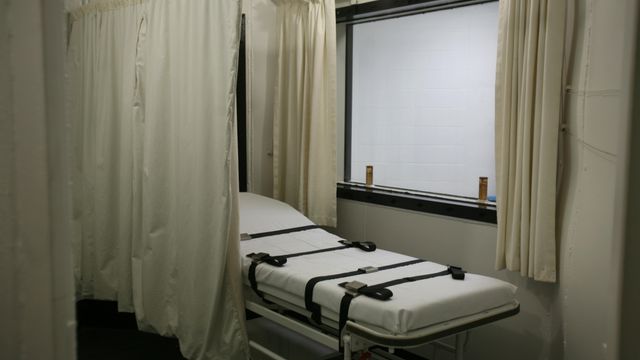Life on death row: 'Am I going to be next?'
More than 1,000 convicted killers have been sent to North Carolina's death row since 1910, when the state began executions. About 150 death row inmates currently sit behind the heavily guarded walls of Central Prison in Raleigh, at 1300 Western Blvd.
Posted — UpdatedNorth Carolina’s death row inmates live in 11x7-foot cells and have access to a community room with stainless steel tables for playing chess, writing, watching a small TV or listening to music on their see-through audio players. Outside each death row pod, prison guards sit behind dark-tinted glass, monitoring the inmates.
Two days a week, a few death row inmates at a time – all dressed in red jumpsuits – get to spend one hour in an exercise yard, where they can play basketball, walk or jog. Some work in the canteen or as a janitor, but no one can make more than a few cents a day.
They can also receive one visit a week with a maximum of two visitors. In the visiting booths, visitors can see and talk with inmates, but physical contact is not possible. While they share many of the same privileges regular inmates have, death row inmates have no contact with the general prison population.
“They have access to the dining room. They have access to books. They have access to writing. They walk to the dining hall – the same things, except they’re segregated. It’s their own little community,” said Central Prison warden Kenneth Lassiter, who has worked for the state Department of Public Safety for 24 years.
Lassiter works closely with the death row inmates and said he believes in fair treatment. “They’re human. Our constitution tells us we must and will treat them as human,” he said. "The minute that we let them rot, they're going to become more violent."
Chaplain Randall Speer also works with the condemned and shares the warden's sentiment. "We need to always remember, they're people, they're human beings, they're human beings first," he said.
One death row inmate, whom WRAL News was not allowed to name or show his face for legal reasons, said he is treated well. “Me personally, I would say above and beyond what we probably deserve,” he said.
Victim's daughter witnesses execution: 'I was glad that he died'
Polls consistently show a majority of North Carolinians want the death penalty to be carried out. Teresa Murray is one of them. She watched as one of her father’s killers, Ernest Basden, was executed in December 2002.
“I was glad that he died,” Murray said. “When I walked out of there, I felt a burden had been lifted from my shoulders. I really did.”
Her father, Billy White, was killed in a murder-for-hire plot 21 years ago. Three people were convicted, including White's wife, but only Basden was sentenced to death. Murray said she plans to come to Raleigh to testify in parole hearings against the other two.
"I do not think they deserve to walk as a free person on this earth again," she said.
Guilt is something never far from the minds of some who live on death row.
“Every time I close my eyes, I see those victims. I said at my trial, 'Sorry is not enough,'" the death row inmate said. “The hardest part here, if you have a conscience, is to forgive yourself.”
High on drugs and looking for money to buy more, he was convicted of killing two people during a robbery 18 years ago. Twenty-two executions later, he knows his time will be up one day.
“I wash my face and look in the mirror every day. This could be the day I’m called down there and served with the countdown,” he said.
Speer, the chaplain, said inmates ask themselves: “Am I going to be next?”
NC inmates die by lethal injection
The first syringes contain no less than 3000 milligrams of sodium pentothal, an ultra-short acting barbiturate that quickly puts the inmate to sleep. The second syringes contain saline to flush the IV line clean.
The third syringes contain no less than 40 milligrams of pancuronium bromide (Pavulon), which is a chemical paralytic agent. The fourth syringes contain no less than 160 millequivalents of potassium chloride, which at this high dosage interrupts nerve impulses to the heart, causing it to stop beating. The fifth syringes contain saline to flush the IV lines clean.
After a flat line displays on the EKG monitor for five minutes, the warden pronounces the inmate dead, and a physician certifies that death has occurred. The witnesses are escorted to the elevators, and the body is released to the medical examiner.
Samuel Flippin was the last person to be executed at Central Prison – in August 2006. Since the death penalty was reinstated in the 70s, the first execution was in March 1984. North Carolina has executed a total of 43 inmates – 42 men and one woman. Three women are also on death row at the North Carolina Correctional Institution for Women in Raleigh.
• Credits
Copyright 2024 by Capitol Broadcasting Company. All rights reserved. This material may not be published, broadcast, rewritten or redistributed.






